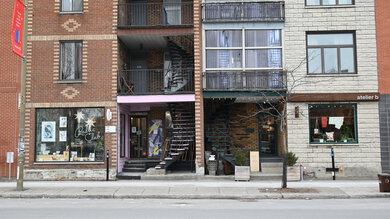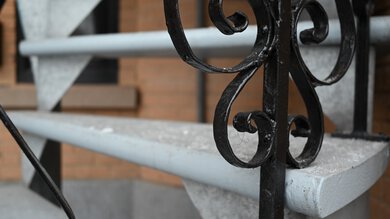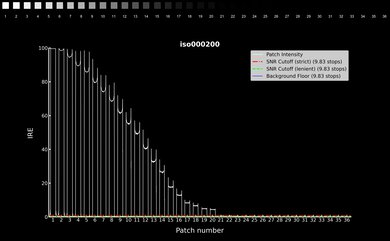The Nikon Z 5 is an entry-level full-frame camera in Nikon's mirrorless Z lineup, sitting below the Nikon Z 6 / Nikon Z 6II. It's a great option for those looking for their first full-frame camera or those who want full-frame image quality without spending a fortune. While it might lag in some areas—most notably, burst shooting and video features—it's still a great camera for photography, with excellent ergonomics, an intuitive user interface, and a solid AF system, not to mention the high-quality lens options available for the Z-mount.
Our Verdict
The Nikon Z5 is good for travel photography if you don't mind a bulkier kit. It isn't the most portable camera, but it's still relatively portable for a full-frame model, though full-frame lenses can also take up more space. Still, the camera's image quality is great, and it performs well even in low light. Battery life is also very good for a mirrorless camera, so depending on your usage habits, you can get a fair amount of shots out of it while you're out and about.
- Excellent image quality.
- Amazing ergonomics.
- Great battery life.
- Sturdy and weather-sealed.
- Not especially portable.
- Autofocus tracking isn't the most reliable.
The Nikon Z5 is great for landscape photography. It takes clean, detailed photos with plenty of dynamic range to capture a wider array of detail in high-contrast landscapes. It also manages noise levels quite well in low light. On top of that, there are some very high-quality wide-angle lenses available for Nikon's Z mount that are perfect for landscape photography. The camera's also well-built and weather-sealed, though it isn't the most portable option.
- Excellent image quality.
- Amazing ergonomics.
- Great battery life.
- Sturdy and weather-sealed.
- Not especially portable.
The Nikon Z5 is decent for sports and wildlife photography. While it's well-built and comfortable to shoot with, it doesn't have a very fast max burst rate, if you tend to rely on burst shooting to capture moments of fast action. On the upside, it has a solid autofocus system with a fairly reliable tracking feature, a great battery life, and dual SD card slots.
- Excellent image quality.
- Effective AF tracking.
- Amazing ergonomics.
- Sturdy and weather-sealed.
- Not especially portable.
- Slow max burst rate.
- Limited buffer depth.
- Autofocus tracking isn't the most reliable.
The Nikon Z5 isn't meant for vlogging. For one thing, it doesn't have a fully articulated screen, so you can't monitor yourself while recording. It's also on the heavier, bulkier side and can only shoot 4k video with a severe crop, which impacts its stabilization and video quality.
- In-body image stabilization.
- Sturdy and weather-sealed.
- Good overall face-tracking performance.
- Not especially portable.
- Screen only tilts and doesn't rotate.
- Severe crop while recording in 4k.
The Nikon Z5 is good for studio video, but it falls short of higher-end or video-oriented models. The biggest downside here is severely cropped 4k recording, which impacts quality, AF performance, and stabilization. It's also capped to a 30-minute recording time limit and doesn't support Log recording to capture a wider dynamic range. On the upside, it has a decent amount of frame rate options and a fantastic battery life for video, with no overheating issues.
- In-body image stabilization.
- Great battery life.
- Plenty of inputs and outputs for video peripherals.
- Good low-light performance.
- Severe crop while recording in 4k.
- No Log profiles.
- 30-minute recording time limit.
The Nikon Z5 isn't designed for action video. It's too big to be mounted on a helmet rig and can't record at high frame rates for slow-motion video.
- In-body image stabilization.
- Sturdy and weather-sealed.
- Not meant to be mounted to helmets or action rigs.
- Severe crop while recording in 4k.
- Lack of high-speed frame rate options.
The Nikon Z5 has impressive RAW image quality. It has excellent dynamic range, so highlight and shadow details are preserved well in high-contrast scenes. Though it isn't the best among full-frame peers, its noise handling is also great in low light. Finally, its sensor resolves plenty of fine detail, resulting in sharp-looking images.
- Good low-light performance.
- Excellent dynamic range.
Performance Usages
Changelog
-
Updated Mar 25, 2025:
We wrote text for the new tests added in Test Bench 0.13.
- Updated Feb 11, 2025: We've converted this review to Test Bench 0.13. We've added new tests for Video Dynamic Range and Luminosity Patch Detection. You can learn more about these updates in the changelog.
- Updated Jan 29, 2024: Added text to the 'Raw Photo Performance' verdict box.
- Updated Jan 29, 2024: Converted to Test Bench 0.12.1.
Check Price
Differences Between Sizes And Variants
The Nikon Z 5 is only available in one color variant: 'Black', and you can see our unit's label here. We purchased the camera with the Nikkor Z 24-50mm f/4-6.3 kit lens, but, depending on the retailer, you can also buy it in a bundle with a different lens, including the Nikkor Z 24-200mm f/4-6.3 VR lens, or without a lens at all.
If you come across a different variant of this camera, let us know, and we'll update our review.
Popular Camera Comparisons
The Nikon Z 5 is an excellent entry-level full-frame camera. Though it has some shortcomings, especially when it comes to shooting speed, processing power, and 4k video capability, it's a fantastic camera for its price and a great entryway into full-frame photography for those looking to upgrade.
For more options, you can also check out our recommendations for the best mirrorless cameras, the best cameras for wildlife photography, or the best 4k video cameras.
The Nikon Z 6 is a bit better overall than the Nikon Z 5, but the Z 5 still offers a lot of value for those just getting into full-frame photography. The Z 5 is Nikon's entry-level full-frame camera, while the Z 6 is a higher-end enthusiast model. Because of that, the Z 6 has a faster continuous shooting speed, can shoot 4k video without a crop and more frame rate options, and has a CFexpress card slot. However, it does have a shorter battery life than the Z 5.
The Nikon Z 5 and the Nikon Z 50 are both entry-level options in Nikon's mirrorless lineup, but they have different-sized sensors. The Z 5 has an advantage in noise and low-light performance thanks to its full-frame sensor, along with advanced features like in-body image stabilization and dual memory card slots. However, the Z 50's APS-C sensor gives it a more portable body. The Z 50 also has faster burst shooting and is a bit better suited to video and vlogging, with more frame rate options and less of a crop on 4k video.
The Nikon Z 5 and Nikon Z 50II use different-sized sensors and offer different advantages, depending on your needs. The Z 5 uses a full-frame sensor and has more advanced features like dual SD card slots and in-body image stabilization, as well as a bigger battery. The Z 50II, meanwhile, uses an APS-C sensor, is more portable, offers faster burst rates, and has more advanced video features.
The Sony α7 III is better overall than the Nikon Z 5, but the Nikon offers more value for its price. The Sony is a more well-rounded camera with better video performance. It also has a longer battery life, faster burst shooting, and a more established lens ecosystem. However, if you're primarily interested in photography, the Nikon offers incredible value, with an excellent sensor, high-resolution EVF, and a well-built ergonomic body.
Test Results

This isn't the most compact option, but it's relatively portable for a full-frame camera. It's much less bulky than a DSLR camera like the Nikon D780, but it isn't as lightweight as comparable full-frame mirrorless models like the Canon EOS RP or the Sony α7 II.
The camera feels very well-built. Though it's mostly made of plastic, it does have a magnesium alloy frame, and it's a lot sturdier-feeling than comparable entry-level full-frames like the Canon EOS RP. It's even weather-sealed against dust and moisture, giving you a bit more peace of mind when taking your camera out on rainy days.
The Nikon Z5 has excellent ergonomics, with plenty of space between the grip and the lens, though this can vary depending on what lens you use. It handles very much like other Nikon mirrorless cameras, with a nearly identical body and handgrip to the Nikon Z 6. The controls are intuitive and well-placed. Overall, it feels great in the hand and is suitable for a wide range of hand sizes.
The electronic viewfinder (EVF) has a high resolution. Though 3.69 million-dot resolutions have become more common in mirrorless EVFs, it's still nice to see on an entry-level model like this, and it means you'll get a clear, sharp view of your subjects through the viewfinder.
The camera has a tilting screen with full touch capability. You can select focus points with it, use it as a touch shutter, or navigate the menu and quick menu. It doesn't get overly bright, making it a bit harder to see what's on the screen on really sunny days.
Nikon's user interface is super intuitive and well-organized. You can navigate the Z5's menu using either the physical controls or the touchscreen. There's a handy quick menu to access commonly used settings, and you can customize it to show your preferred settings. The menu also has a help function that gives you more information about certain settings, which you can access by tapping the '?' symbol in the bottom left corner of the screen or pressing the zoom-out button. However, it's only available for some settings.
The camera uses a high-resolution full-frame sensor, though it isn't backside-illuminated like the sensor found on the higher-end Nikon Z 6. Backside-illuminated designs help with light-gathering efficiency.
Battery performance is great overall. It's CIPA-rated for 390 shots when shooting through the viewfinder and 470 shots when shooting through the screen. Of course, in the real world, that number will vary depending on how you use your camera, how long you keep it powered on, what kind of shooting you're doing, and more. However, the CIPA rating is a good indicator of how it performs relative to other cameras, and the Z 5 performs quite well among mirrorless options, outperforming the more powerful Nikon Z 6II. That said, it still falls far short of DSLR cameras and newer mirrorless options.
The camera's battery life is especially impressive in video mode. The battery can last through over two and a half hours of continuous video recording in 4k. It's worth noting, however, that the camera can only record 4k video at 30 fps with a severe crop and limited bit rates, so it's less demanding than cameras that can record at higher frame rates and bit rates. If you need to extend the camera's battery life even further, you can power it externally via USB-C.
Shooting speed is one of the areas in which the Nikon Z 5 falls short of pricier models, but this isn't surprising given its relatively affordable price point.
Its image buffer has a fixed cap, regardless of format, which is a bit disappointing given its slow shooting speed. However, considering you can shoot up to 100 frames in either RAW or JPEG, it could be worse. Thankfully, if you manage to fill up the buffer, it's very quick to empty, so that won't slow you down for long. Where the camera falls apart is its burst rate, which maxes out at a measly five fps. That's fine if you're just taking photos of your dog or your kids, but it's probably not going to cut it for birds in flight or fast-moving sports photography.
The Nikon Z 5 uses the same basic autofocus system as the Nikon Z 6, with on-sensor phase detection technology. It's pretty good overall. It has a few different subject detection modes, including animal detection, as well as face and eye detection. Its tracking feature isn't as consistent as newer, higher-end Nikons like the Nikon Z 6II, but it still performs reasonably well overall for those who prefer a more hands-off approach to autofocus. With firmware version 1.40, Nikon updated the eye-detection performance for the camera's 'Auto-area AF' mode. The eye tracking is a bit more reliable, but it still falls considerably short of competitors like the Sony a7 III and the Canon EOS R6, though these both sit at higher price points. Its area mode options are also more limited than competitors.
If you don't use the tracking mode, on the other hand, the camera's AF proves to be quite good. It focuses quickly and smoothly when using the center focus point, with little trouble staying with the subject behind the AF point. That's great for scenarios with more predictable subjects.
Unlike the Canon EOS RP, the Nikon Z5 includes built-in image stabilization, which works in tandem with optically stabilized NIKKOR Z lenses. You can get clear shots at reasonably slow shutter speeds, but we found that the IBIS isn't as effective as the IBIS on the Nikon Z 6II, despite Nikon advertising both systems as offering up to five stops of stabilization performance.
The camera's dynamic range is excellent, especially at its base ISO. It can capture a wide range of detail, preserving a good range of highlights and shadows.
The Nikon Z5 has a high-resolution sensor that resolves fine details very well. That means you have more leeway to crop in without losing detail than you would with a smaller sensor or lower-resolution camera.
The sensor has great noise handling. Though noise is somewhat inevitable in really low-light situations, you can still get relatively clean RAW files when there's less available light.
The Nikon Z5 has relatively limited video features. It doesn't support Log recording for those who want to preserve more dynamic range and have more flexibility in post. However, it's suitable enough for more casual video recording.
Unfortunately, this camera can only record 4k video with a severe 1.58x crop, significantly reducing your field of view. It's limited to 30 fps in 4k, too, so you're out of luck if you want to capture high-frame rate footage for slow-motion clips.
The camera's internal recording capability is okay in 4k, but the camera isn't really intended for more advanced video work. There's no Log gamma curve, and it's limited to 8-bit 4:2:0 capture, meaning you'll have less leeway to color-grade and process your footage.
The autofocus system is okay for 4k video. It only supports face detection in video mode; however, it does a great job of tracking moving subjects. It's a little more sluggish when you use the general subject tracking—that is, when you select the subject manually rather than letting the AI detect a face on its own. You can adjust AF speed and sensitivity as well, which is great.
4k video quality is good overall. It's mostly limited by the heavy crop, but videos are still reasonably sharp and detailed, even in low light. It has a bit of an edge over the competing Canon EOS RP in terms of sharpness and noise handling—just don't expect the same level of quality as cameras like the Nikon Z 6II that can shoot uncropped 4k.
Rolling shutter effect is really bad. There's heavy distortion in 4k, which can be especially distracting when panning the camera.
In 1080p, the camera can shoot at up to 60 fps, and thankfully, there's no crop. While it's suitable for lightly slowed-down footage, a lot of newer or higher-end cameras can shoot at even higher frame rates to get even greater degrees of slow motion.
As with 4k, internal recording is somewhat limited in 1080p. It's still limited to 8-bit 4:2:0 capture. There's also a 30-minute cap on recording, and the camera's bit rates are nothing to write home about.
In 1080p, autofocus works quite well. The tracking feature does a great job of keeping moving human subjects in focus. The general subject tracking is also a lot better in this resolution.
The 1080p video quality is pretty good. Details are a little more muddled than on the Nikon Z 6, but it's a bit better than the Canon EOS RP and isn't bad overall. It even performs decently well in low light without overly noisy footage.
Thankfully, there's much less noticeable rolling shutter effect in 1080p, though there's still a bit of distortion when panning.
Like the Nikon Z 6, the Nikon Z 5 doesn't support Log recording, which limits its total dynamic range but eliminates the need to color-grade and process your footage. Unfortunately, the range of detail it can capture isn't that wide, which can impact quality and exposure flexibility, as you'll have very little leeway to make adjustments after the fact.
Tested settings:
- Resolution: 4k
- Frame Rate: 30 fps
- Log Format: N/A
Because the camera doesn't support Log recording, the range of detail is quite limited across ISO settings. The camera struggles especially to retain highlight detail as you bump the ISO.
Tested settings:
- Resolution: 4k
- Frame Rate: 30 fps
- Log Format: N/A






















